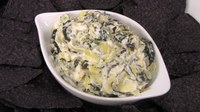Prairie Fare: Naturally Recycle Your Kitchen Wastes
(Click an image below to view a high-resolution image that can be downloaded)
By Julie Garden-Robinson, Food and Nutrition Specialist
NDSU Extension Service
“Julie, Julie, how does your garden grow?” people often ask me when inspired by my maiden name.
Yes, that reminds me of the “Mary, Mary, quite contrary, how does your garden grow?” nursery rhyme. Fortunately, people leave out the “quite contrary” part. Well, they usually do.
This year, my garden has hosted rabbits enjoying buffets of tender salads and vegetable side dishes.
One morning, I admired our pole beans, which almost had reached the height to begin climbing on a structure. After work, I ventured to our garden to check my garden again, even though I wasn’t expecting the beans had grown into the clouds.
Unfortunately, my lush bean plants were now green sticks.
The rabbits had been at work, too. I think the rabbits have invested in special equipment this year: They are pole-vaulting or parachuting into our garden.
At least one of these “Hairy Hare-dini” characters has been able get through all sorts of barriers.
Not only do we have a chain-link fence around our yard, but we also have a mesh fence around the garden. The chain-link fence allows easy access for the small rabbits, but we thought the mesh fence was impenetrable.
Our three dachshunds are another measure of defense. They regularly chase rabbits around our yard.
This year, we added our homemade compost to our garden, which was promoting good growth prior to the rabbit attack. I would be happy to divert some vegetable peels to the rabbits to chomp instead of my tender bean leaves. I think these rabbits prefer “garden-fresh” produce, though.
With a few more tweaks on the barriers, some added compost and our dogs spending more time outdoors in the nice weather, my garden may return. I remain hopeful.
Have you tried composting? Composting is a natural form of recycling that serves a variety of purposes. If you enjoy gardening, composting provides soil amendments to add to your garden. Instead of going to the landfill, your vegetable peels can be broken down by bacteria and other microbes to produce rich material to add to your garden.
Think “green” or “brown” when deciding what to compost, but leave out the protein foods such as leftover meat. Green materials include lawn clippings and kitchen waste. Brown materials include leaves and wood chips.
Egg shells can go in the compost bin, but do not add foil, plastic and paper products to your compost bin. Leave out diseased plants and weeds that have gone to seed.
A variety of invisible organisms, including bacteria, and visible organisms, including earthworms, feed on the plant material. As a result of the action of these “critters,” the plant material warms within your compost pile. Warm temperatures above 110 F promote the breakdown of the materials.
If you decide to begin composting, you can purchase a structure or build your own using plans in the resources provided with this article. Consider these tips if you want to begin composting:
- Choose a good location to place your compost bin. It should be level and have drainage, with access to water (rain or your garden hose). Because compost bins are not always attractive to your neighbors, consider a little camouflage. You may want to hide your bin or surround it with flowers or plants.
- Consider a bin no smaller than 3 feet by 3 feet by 3 feet and no larger than 5 feet by 5 feet by 5 feet.
- Be sure to mix the material thoroughly. Use a pitchfork.
- Keep the compost pile moist but not too wet. During dry weather, you may want to “water” the compost weekly.
- Avoid adding branches. If you use them, chop them in a wood chipper first.
- Cover the pile with a tarp or other cover during dry weather. This helps prevent moisture loss and excess moisture from heavy rain.
- Turn the pile before the major freeze if you add a lot of leaves in the fall.
- Do not turn the pile during the winter in cold climates.
- Be patient. Depending on the environmental conditions and composition, compost may be ready to use within six months (May to October).
For many more tips and details, see these Extension Service web-based composting guides:
- North Dakota State University Extension Service: http://tinyurl.com/compostingpractices
- University of Maryland Extension: https://extension.umd.edu/hgic/soils/compost
- University of Illinois Extension: http://web.extension.illinois.edu/homecompost/building.cfm
You can make some “compost starter” by trimming veggies to enjoy with this delicious dip.
Spinach Artichoke Dip (Slow Cooker)
2 (14-ounce) cans artichoke hearts, drained and coarsely chopped
1 (10-ounce) package frozen spinach, thawed, drained and squeezed dry
1 c. shredded part-skim mozzarella cheese
1/4 c. grated Parmesan cheese
1 c. fat-free Greek yogurt, plain
2 (8-ounce) blocks 1/3-less-fat cream cheese, softened and cut into 1/2-inch cubes
4 cloves garlic, minced
1/2 tsp. crushed red pepper flakes
1/2 tsp. ground black pepper
Fresh vegetables (baby carrots; red, orange, yellow or green bell pepper strips; broccoli; cauliflower; zucchini; and/or sugar snap peas)
If time allows, place spinach in the refrigerator overnight to thaw. Otherwise, run hot water over spinach until it has thawed. Coat slow cooker with cooking spray.
Add all ingredients to slow cooker. Stir to combine, cover and cook until heated through, 1 1/2 to two hours on high or three to four hours on low. Serve warm with raw veggies.
Makes 20 (1/4-c.) servings. Each serving has 100 calories, 5 grams (g) fat, 7 g protein, 8 g carbohydrate, 4 g fiber and 300 milligrams sodium.
(Julie Garden-Robinson, Ph.D., R.D., L.R.D., is a North Dakota State University Extension Service food and nutrition specialist and professor in the Department of Health, Nutrition and Exercise Sciences.)
NDSU Agriculture Communication - June 25, 2015
| Source: | Julie Garden-Robinson, (701) 231-7187, julie.garden-robinson@ndsu.edu |
|---|---|
| Editor: | Ellen Crawford, (701) 231-5391, ellen.crawford@ndsu.edu |



